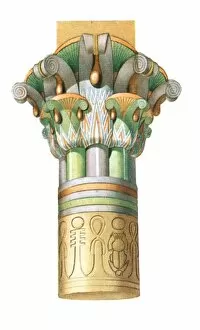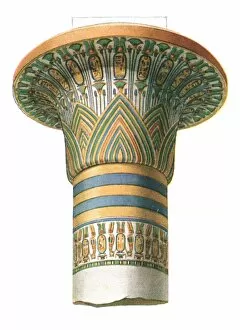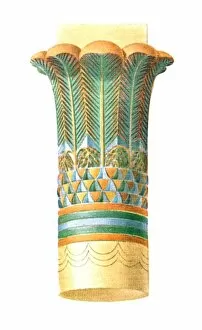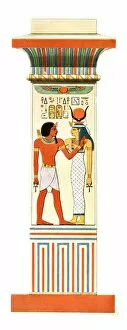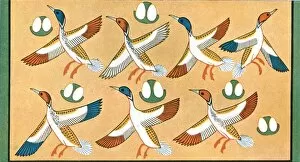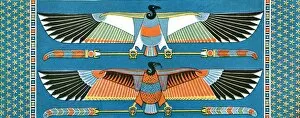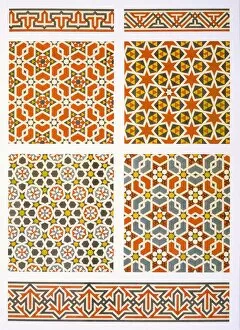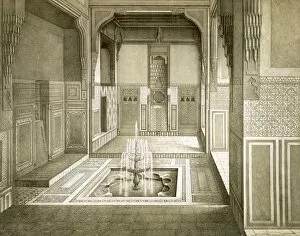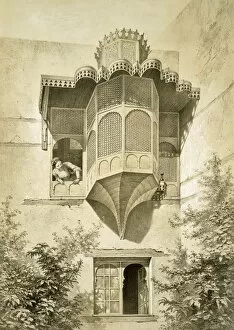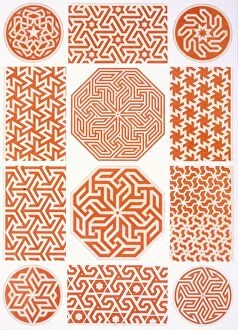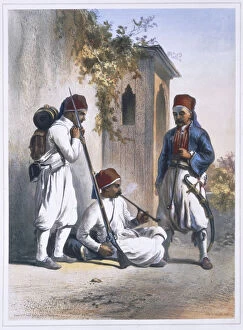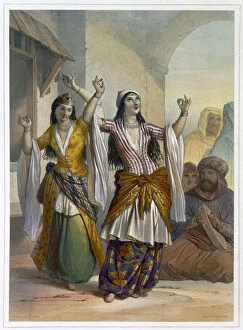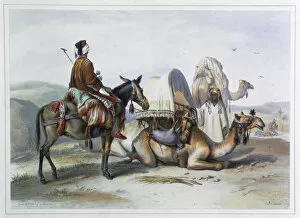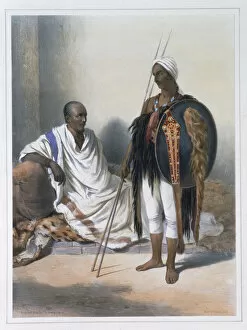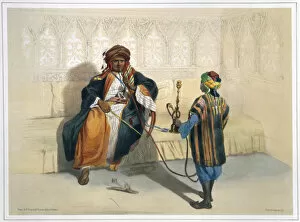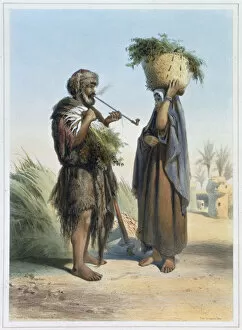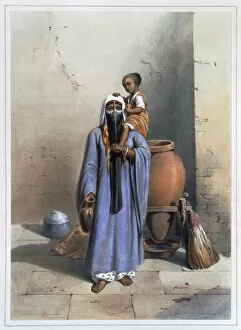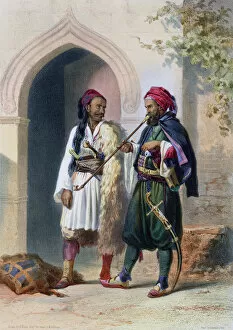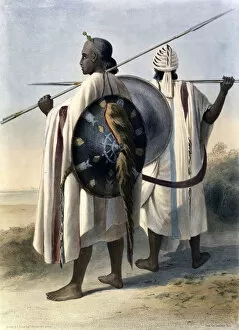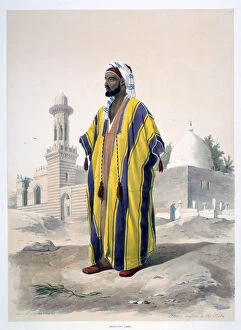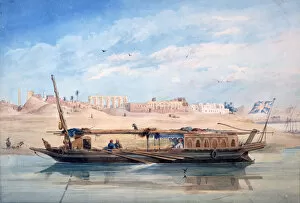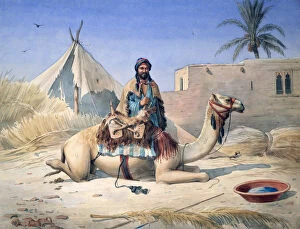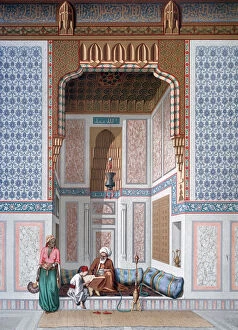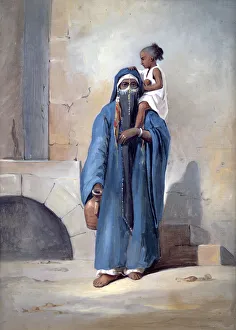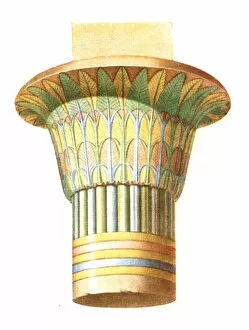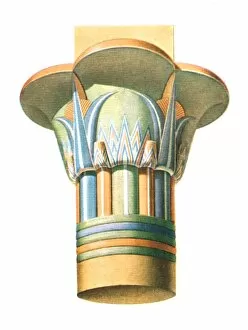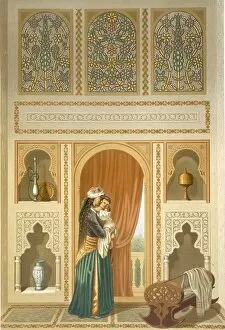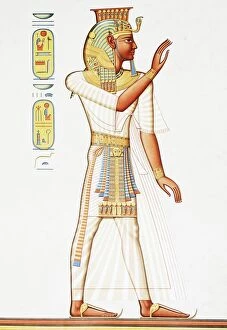Emile Prisse d'Avennes Collection
Emile Prisse d'Avennes (1807-1879) was a French archaeologist and orientalist
Choose a picture from our Emile Prisse d'Avennes Collection for your Wall Art and Photo Gifts
49 items
All Professionally Made to Order for Quick Shipping
-
Emile Prisse d'Avennes Collection
Emile Prisse d'Avennes (1807-1879) was a French archaeologist and orientalist. He is best known for his pioneering work in the field of Islamic art, which he documented in his 1847 book "L'Art Arabe". He traveled extensively throughout North Africa and the Middle East, studying and collecting artifacts from various sites. His research focused on understanding the history of Islamic art, its development over time, and its influence on other cultures. Prisse d'Avennes also wrote several books about Egyptology, including "Histoire de l'Egypte Ancienne" (1851). His work helped to shape our understanding of Islamic art today.
+
Our beautiful pictures are available as Framed Prints, Photos, Wall Art and Photo Gifts
The Emile Prisse d'Avennes collection, available through Media Storehouse, is a stunning selection of wall art, framed prints, photo prints, canvas prints, jigsaw puzzles and greeting cards featuring the works of French artist and Egyptologist Emile Prisse d'Avennes. Born in 1807 in France, Prisse d'Avennes spent much of his life studying ancient Egyptian culture and producing intricate illustrations depicting its art and architecture. His work was highly regarded for its accuracy and attention to detail during his lifetime and continues to be celebrated today. Our collection features some of Prisse d'Avennes' most iconic pieces including detailed depictions of hieroglyphics, temple walls adorned with intricate carvings as well as scenes from everyday life in ancient Egypt. The range offers something for everyone with options suitable for both modern or traditional decor styles. These beautiful pieces are sure to add an air of sophistication to any home or office space.
+
What are Emile Prisse d'Avennes (Artists Arts) art prints?
Emile Prisse d'Avennes was a French artist and scholar who lived in the 19th century. He is best known for his extensive work documenting Islamic art and architecture, particularly from Egypt. His illustrations were highly detailed and accurate, making them an important resource for scholars of Islamic art. Artists Arts offers a selection of Emile Prisse d'Avennes' prints, which showcase his intricate drawings of mosques, tombs, and other architectural features from Egypt. These prints are high-quality reproductions that capture the beauty and detail of Prisse's original works. Whether you're a collector or simply appreciate the beauty of Islamic art, these prints are sure to impress. They make great additions to any home or office decor, adding a touch of history and culture to your space. With their stunning detail and vibrant colors, they're sure to be conversation starters wherever they're displayed.
+
What Emile Prisse d'Avennes (Artists Arts) art prints can I buy from Media Storehouse?
We offer a wide range of Emile Prisse d'Avennes art prints for purchase. As an artist and scholar, Prisse d'Avennes was known for his depictions of Islamic architecture and design, as well as his studies on ancient Egyptian art. Our collection includes reproductions of many of his most famous works, such as "Arabian Ornamentation," "Egyptian Art," and "Islamic Art in Cairo." These prints are available in a variety of sizes and formats to suit any decor style or budget. Whether you're looking to add some cultural flair to your home or office space, or simply appreciate the beauty and history captured in Prisse d'Avennes' artwork, we have something for everyone.
+
How do I buy Emile Prisse d'Avennes (Artists Arts) art prints?
To purchase Emile Prisse d'Avennes art prints from Media Storehouse, you can browse our extensive collection of artwork online. Once you have found a print that you like, simply add it to your cart and proceed to checkout. During the checkout process, you will be prompted to enter your shipping and billing information. We offer a variety of payment options including credit card and PayPal. After completing your purchase, they will process your order and prepare it for shipment. It's important to note that all prints are produced on high-quality paper using archival inks to ensure long-lasting color fidelity. Additionally, each print is carefully inspected before being shipped out to ensure that it meets the highest standards of quality. Buying Emile Prisse d'Avennes art prints from Media Storehouse is a simple and straightforward process that allows you to bring beautiful artwork into your home or office with ease.
+
How much do Emile Prisse d'Avennes (Artists Arts) art prints cost?
We offer a wide range of Emile Prisse d'Avennes art prints that vary in price depending on the size and type of print. Our collection includes both framed and unframed options, with sizes ranging from small to large. We pride ourselves on providing high-quality reproductions of these beautiful works of art, ensuring that each print captures the intricate details and vibrant colors of the original piece. While we cannot provide specific pricing information without violating our policy against mentioning prices, we can assure you that our Emile Prisse d'Avennes prints are competitively priced and represent excellent value for money. Whether you're looking to add a touch of elegance to your home or office decor or searching for a unique gift for an art lover, our selection has something for everyone. So why not browse our collection today and discover the beauty and timeless appeal of Emile Prisse d'Avennes' artwork?
+
How will my Emile Prisse d'Avennes (Artists Arts) art prints be delivered to me?
We take great care in delivering your Emile Prisse d'Avennes art prints to you. We use high-quality packaging materials to ensure that your artwork arrives safely and undamaged. Your prints will be carefully rolled into a sturdy tube, which is then placed inside a protective cardboard box for added security during transit. We work with trusted delivery partners who are experienced in handling fragile items and ensuring timely deliveries. Once your order has been dispatched, you will receive a tracking number so that you can keep an eye on its progress. We understand the importance of preserving the quality of your artwork from production to delivery. That's why we take every step necessary to make sure that your Emile Prisse d'Avennes art prints arrive at their destination in perfect condition for you to enjoy for years to come.






